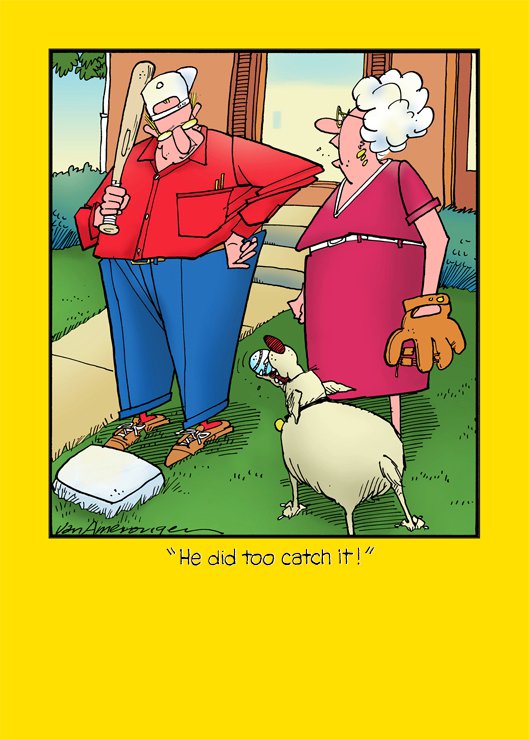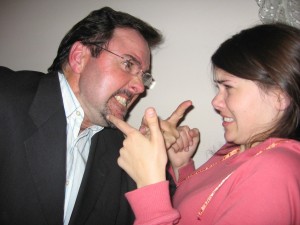“The Crazy Ones” – Apple Computer TV Commercial Voiced By Steve Jobs
“The Crazy Ones” – Apple Computer TV Commercial Voiced By Steve Jobs Read More »

October 1, 2011 – Saturday’s Smile Read More »
Podcast: Play in new window | Download ()
Subscribe: Apple Podcasts | Spotify | RSS | More
Download The Podcast Or Non-Flash Playback

For a few weeks I’ve been thinking about the subject of helping, coaching, consulting, mentoring and advising. Many people hammer those of us in the “helping” businesses because they think we’re frauds and fakes. Some are, but that’s true of most professions.
I’ve postponed talking about it, but this morning serendipity kicked me in the butt and compelled me to record today’s episode. The serendipity arrived in the form of another podcast.
EndingTheGrind.com is a site and podcast done by Steve. He interviewed Penelope Trunk for his show and not too many minutes into the show, things took a turn that Steve wasn’t expecting. He got some career advice from Ms. Trunk that I relished hearing, even though others felt uncomfortable with the conversation.
It was profitable confrontation. I saw it for what I think it was – honest, blunt help!
My first thought was, “Steve’s lucky. She’s taking the time to really give him a dose of medicine that may change his life.”
Steve posts that he had reached out to Marcus Sheridan, TheSalesLion.com, for advice about the interview. After hearing the interview, I agreed with Marcus.
From the comments and Tweets it appears others may have felt Penelope was rude, hateful and angry. I didn’t see it or hear it that way, but I certainly could relate to the clear frustration she experienced. She saw things quite clearly. Steve didn’t. It made her crazy. I know that feeling.
We all need help. There are times in our lives when we all need a kick in the butt.
It’s ridiculous to claim that only people who have no challenges are capable of helping others. The doctor who gets sick needs the care (help) of another doctor. The barber has to get his hair cut (unless he shaves his head like all the cool kids do). The dentist must go to the dentist.
Helping people is an honorable thing to do, whether people get paid to do it or not. Penelope didn’t give Steve advice because he paid for it, even though he joked about her sending him a bill. No, she had an opportunity to pass on some wisdom, as she saw it, and she took it. Steve didn’t see it at the time, but I suspect he’s coming around by now.
It was great to hear, even if my audio snobbery lamented the audio quality of the podcast. It was compelling. It was powerful. All the while I was thinking, “Steve, this can change your life if you let it.” I hope he uses it to climb higher. And I don’t even know Steve, but I know enough to suspect he’ll embrace it. I hope so.
I hope you’ve got people in your life who are willing to confront you in order to help you. I do. And I’m thankful for all of them.

Episode 103 – Helpful Confrontation: We All Need Tough Talk Sometimes Read More »
Podcast: Play in new window | Download ()
Subscribe: Apple Podcasts | Spotify | RSS | More
Download The Podcast Or Non-Flash Playback

I know two guys who suffered major setbacks in their careers. Their lives were turned upside down financially.
Both men took different, but similar paths toward simplicity. The practical realities of their situations dictated monumental changes in their lifestyles.
The big houses. Gone. The imported fancy cars. Gone. High dollar toys and lake houses. Gone.
Their families. Intact. Their friends. Mostly intact.
I think of them often…and a few others like them. And I smile.
Listen and I’ll tell you why.

A late addition to this episode because it just seems fitting, and because I love his music.
Episode 102 – What Defines You? Read More »
Podcast: Play in new window | Download ()
Subscribe: Apple Podcasts | Spotify | RSS | More
Download The Podcast Or Non-Flash Playback

Today’s show addresses one of my most recent urgent topics with clients, pricing.
Coupled with pricing have been ongoing conversations about budgets and discounting. Blame it on the economy, but whatever the reason I’m finding so many small business owners experiencing challenges to their pricing structure.
Prospects blame it on the constraints of the budget. “I don’t have the budget for that amount,” they claim. Quite often we’re stuck with a single priced offer.
Look at those crabs. You’re budget won’t allow you to spend $6. Well, that’s why that one $5 crab is sitting there. Notice there’s only one $5 crab. Brilliant marketing and sales strategy. Save a buck, but there’s only one of them! Buy him. He’s puny, but you can save a whopping dollar. He’s a budget crab!
Washington, D.C. is living proof that budgets were meant to be broken. I’ve never seen a budget yet that wasn’t flexible. It’s an easy scapegoat for buyers. Blame it on the budget. Don’t fall for that.
Mentioned in today’s show is SaltyDroid.info. It has to do with commenting on blogs. Listen to the show and let me know if this has ever happened to you. Call me an “idiot,” but I’m willing to own my words. I was very tempted in today’s show to riff about the curse of digital anonymity, but I’ll save that for another day. My comments at SD’s site do have application to today’s subject though. I did make an effective tie in.
Check out the “Hire Me” page. It’s brand new.
Plug in your email address over there to the right and I’ll make sure you get my Bula Business Builder Newsletter. Don’t worry. It comes out quite randomly.
Thanks,

Episode 101 – One Price Does Not Fit All Read More »
Podcast: Play in new window | Download ()
Subscribe: Apple Podcasts | Spotify | RSS | More
Download The Podcast Or Non-Flash Playback

Success is hard. Failure is harder.
Two things motivate most people who embark on the road to self-employment:
1. A problem for which they’ve not found a suitable solution
2. Dread
This isn’t a hard fast rule. It’s what I’ve observed during my 39 years of business experience.
Pursuing passion is terrific, but in far more cases than not, I’ve seen people whose passion was to avoid some pain. Maybe it was the pain of going to a job they hated. Maybe it was the pain of dreading that they’d be downsized at any moment. Maybe it was the pain of having a problem for which they could find no solution. Or, they couldn’t find a solution that was as good as one they believed they could create.
“I don’t know what I want, but this ain’t it.”
We’re often more driven to avoid pain than we are to capture pleasure, or fulfillment. It makes sense. First things first and all that.
I’ve taken people to the emergency room before and the first course of action – after quickly assessing the problem – is to get the pain under control. Pain management is a primary driver behind health care. It’s also a big driver behind business building…or career building.
Does that seem shallow to you? It shouldn’t be. To live a life where you can limit the amount of dread…that’s a good thing. An honorable thing.
Mentioned in today’s show:
• Carol Roth‘s book, The Entrepreneur Equation
• Randy Pauch’s Last Lecture
• Chick-Fil-A
• We’ve got rich folks in Dallas. Big Rich Texas!
• 1 Tim. 6:10, “For the love of money is a root of all kinds of evil: which some reaching after have been led astray from the faith, and have pierced themselves through with many sorrows.”
• It’s money that matters, but not most. Ask Randy Newman. Or ask him again.
• Money doesn’t care, but people do.
• People. Love. Just 2 things that matter more than money.
Happy Labor Day Weekend!

Special Labor Day Weekend Episode – Dread, The Eyes Of Motivation Read More »